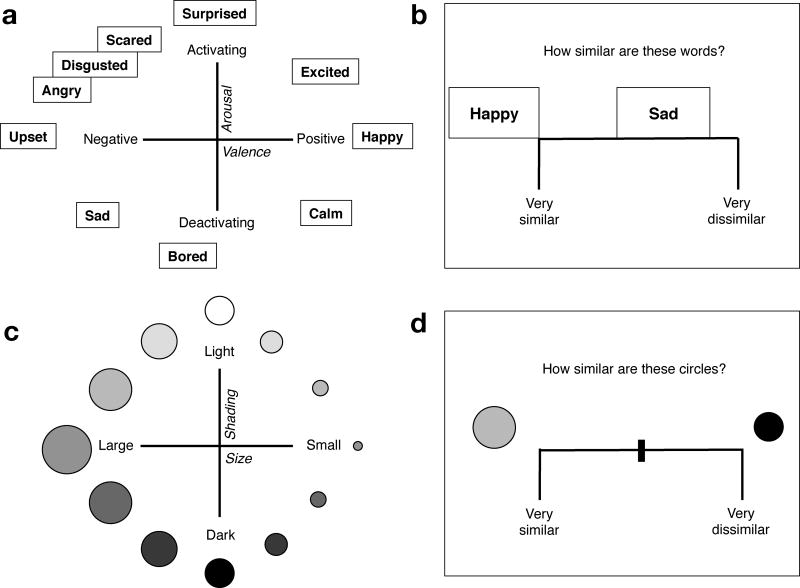Figure 1.
Schematics for the semantic similarities and perceptual similarities tasks. a) The 10 emotion words used in the semantic similarities tasks, organized according to hypothesized positioning within the dimensions of valence (negative—positive) and arousal (deactivating—activating). b) Example trial from the semantic similarities task, in which participants rated the similarity of two emotion words by placing the word on the right closer to or farther away from the word on the left. c) Stimuli from the perceptual similarities task organized according to their constructed qualities, which varied along the dimensions of size (large—small) and shading (light—dark). d) Example trial from the perceptual similarities task, in which participants rated the similarity of two circles using a sliding scale.

